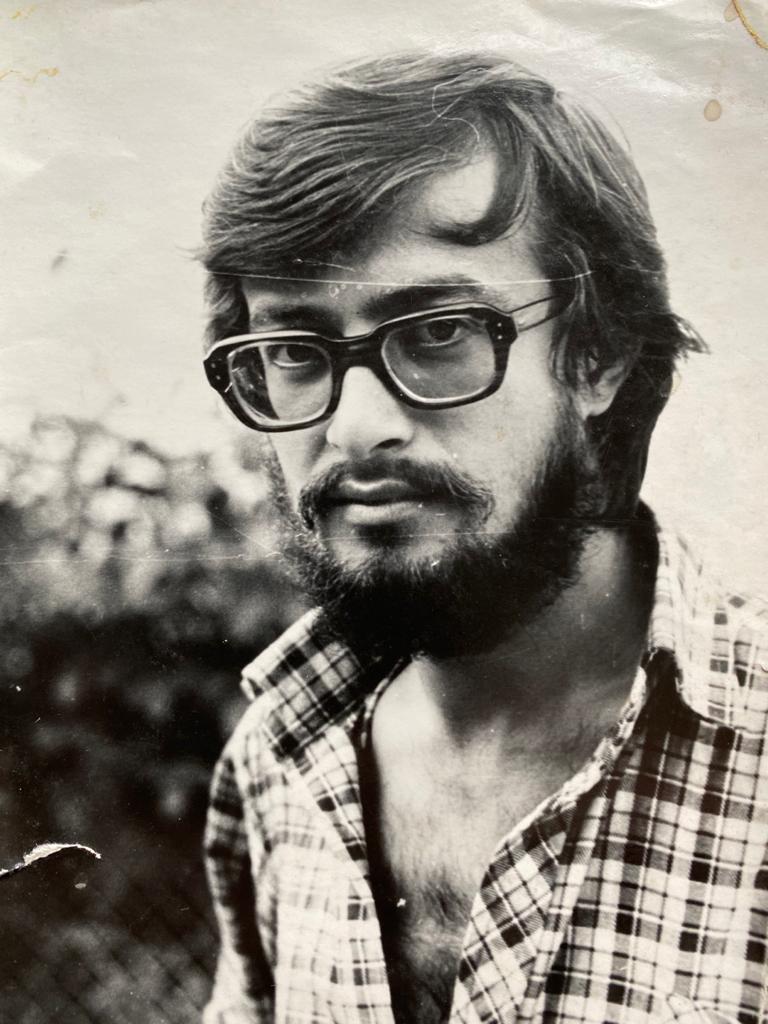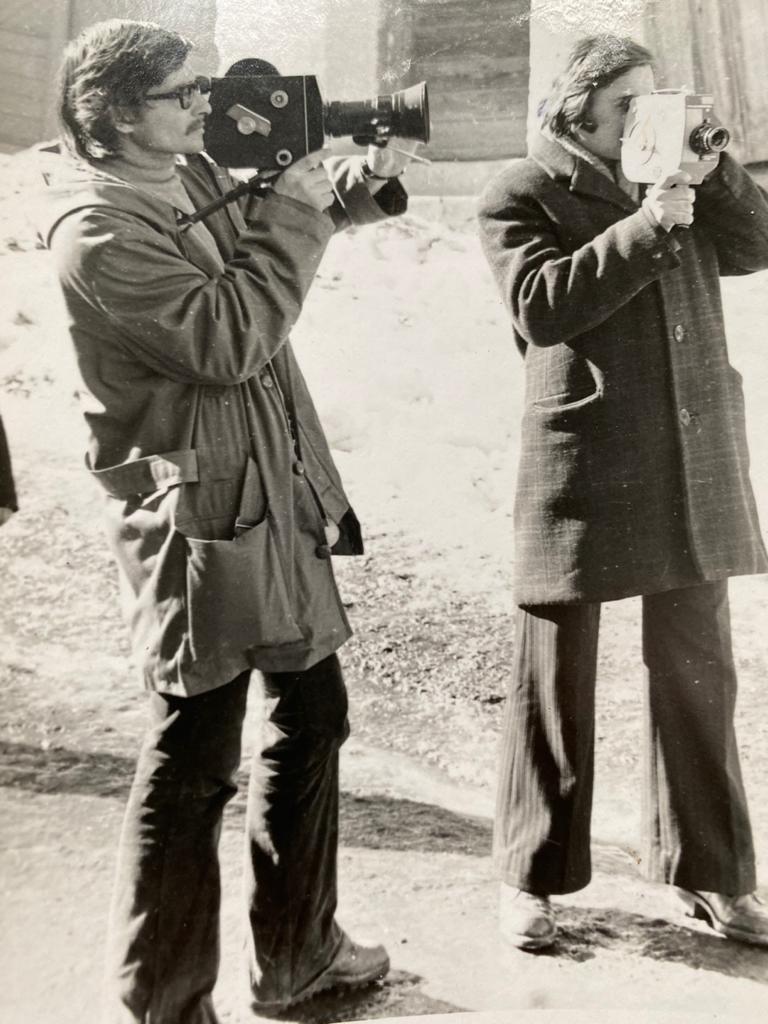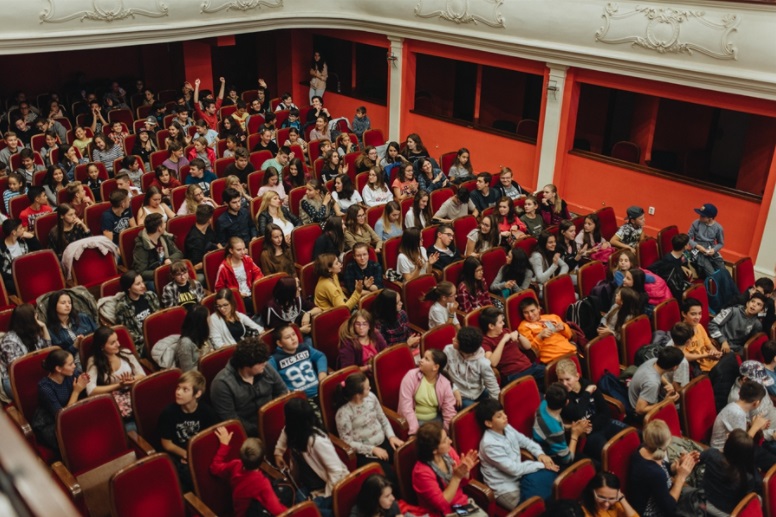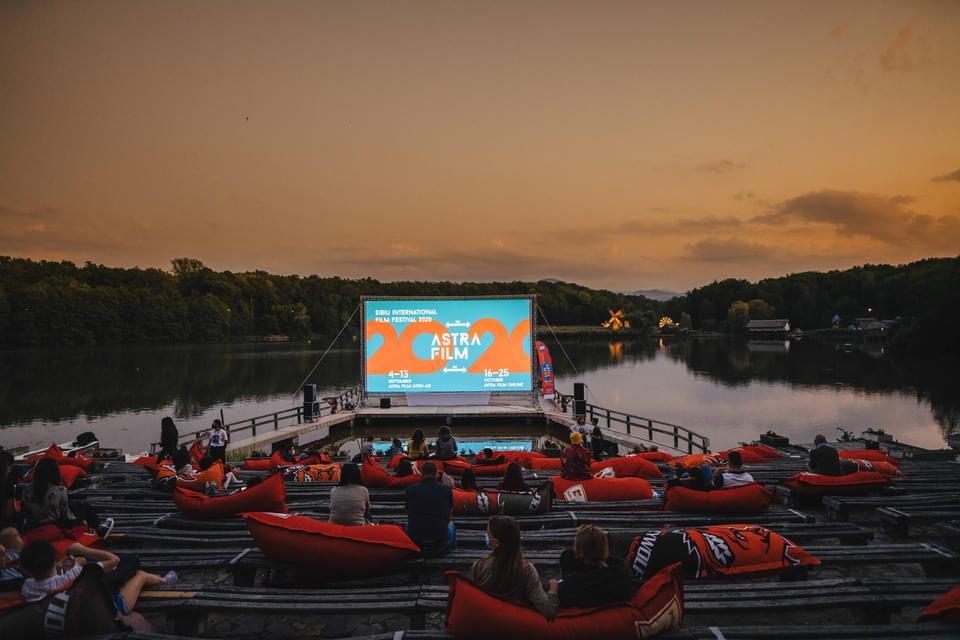Dumitru Budrala, the director of Astra FF: “It was almost impossible to start a film festival in the ’90s.”
A world-renowned film festival – Astra Film Festival was born in 1993, as a first attempt to promote documentary film. 27 years have passed since then, the memories have piled up, and the festival has developed with each edition. I talked to the festival director – Dumitru Budrala, who told me what it was like during communism, how he came up with the idea of a film festival and what were the challenges he encountered during these 27 years. A delightful interview, full of history and great stories, which take us back to the time when the internet did not exist, TV had just appeared, and the Romanian administration really didn’t give a damn about culture. About what it was like in those days to organize a film festival compared to the present times.

Mr. Budrala, what can you tell me about the communism era? What were you doing back then, what were your chances and was the system an “impediment”?
Those years were quite common. I was a proud pioneer in my 2nd grade. In 1968, during the Czechoslovakia invasion, I was an impassioned member of the Youth Communist Party, ready to shoot the Russians in order to protect my country – it was right after I listened to Ceaucesu’s famous speech on the radio. I believed the rumors that Romania had laser arms that could melt Russian tanks. Can you believe what went through my head?
Going back on memory lane, I remember I had a bicycle which I sold to a foreman, who gave me a Smena recorder – I was astonished by the art of taking pictures. Then I bought a Zenit and I went to weddings, baptisms, funerals – as a photographer, and I raised money for a Pentax, which was great for making slides, too. The transition to film happened fast, during the ‘80s, when I was working as a professor in the country side and I was shocked by a murder. No one was looking into it, even though everyone in the village suspected who the killer was. I wanted to make justice but didn’t know how, I believed filmmaking could be a good tool, I had no idea in which way, so I started experimenting. I initiated a film club with some of the professors, and it was a huge success. I have always been into cultural events, even in the darkest days of communism. Some were fully booked, filled with emotions, but I was doing the impossible to organize them, you weren’t allowed to disturb the important leaders of the party. Once I came to a stiff end, I was punished by the party’s organ with a warning “censure vote” – a tough punishment back then.
However, I used to take photographs, slides accompanied by sound, even some 16mm films which I processed and edited in my studio. But I needed money for that, film was expensive. I organized theatre plays, music events and with the money earned, I bought film and processing systems. Only to make movies which I also presented within cultural events. It was my mobile-perpetuum – an utopia driven by my enthusiasm.

What did you feel in 1989, during the Revolution? How did you see this historical event?
Before the Revolution, I tried fleeing Romania a couple of times, all unsuccessful attempts; that shows that my heart wasn’t really in leaving the country.
So when the Revolution came, it was the best feeling of freedom. I was a substitute teacher in Jina and, right before Ceausescu’s attempt of running, I did a demonstration in Jina – a shaft of people driven by a fanfare, followed by an ARO off-road car with its lights on, followed by us – the “leaders” of the revolution and another 100 students who were screaming what we were screaming. A unique show and a total chaos. I was elected President of the National Saving of Jina’s Front and I kept my position for a month, then a coup d’etat happened and that was it.
When has the thought of a film festival first popped into your head?
In 1990, the administration of Astra Museum wanted to create an audio-visual department. I already had some years of experience in cultural events, so I applied for the job and won the contest, and I became the coordinator of this department. It was actually intended for taking photos and video recording the exhibitions and other events taking place in the museum, but I had other plans with it. During this period of time, two of my VHS movies were selected by the Nordic Association for Anthropology Filmmaking, so I went to Stockholm, to NAFA’s film festival. And this is how it started, I have experienced a unique type of filmmaking, anthropological documentary films exposing the human realities surrounding us.
In 1993, I started the film festival on NAFA’s prototype and it was a paradox. I still remember those times – we were using typewriters and getting replies to our invitations one month later, the borders were closed, you could travel only with a visa and the contact with international documentary filmmakers was almost non-existent. It was the time of the Mineriads, of the ethnic conflicts and of galloping inflation – almost all intellectuals were thinking of fleeing the country. Few of them had computers and the internet didn’t exist back then.
So starting a documentary film festival was almost impossible from the simple fact that people didn’t know what a documentary film is – it was easily mistaken for a TV coverage, even by those who were giving us the approvals or the financial support needed.
Tell me a bit more about the first editions of the festival. How was it received by the public and what were the future plans for it?
Astra Film Festival launched on a no man’s land. Sibiu didn’t have a tradition of cultural or film events, there were no cultural funds or any kind of support from the institutions who were managing the Romanian culture. I remember I went to the mayor of the city in 1993 and he practically kicked me out, saying “Fuck you and your culture! Do you have any idea how much a meter of concrete is?” You had to invent ways of earning the money needed – sometimes barters were good enough, but some stuff really needed cash. My brother had a flourishing farm back then, so he sponsored me with two trailers of potatoes, which he brought in front of the museum – we spread the news around that we were selling potatoes at half of the market price and it was amazing! We sold everything and with the money earned, we paid for the guests’ lunch and dinner menus. However, we had some unexpected surprises – the Romanian public was so shocked by Michael Stewart’s documentary about the minorities of Transylvania. They just left the cinema hall. Michael Stewart was there and was looking in surprise at me, didn’t understand what was happening.
Looking back, the first edition had all the components of a real film festival – jury, a selection of films, a poster and a catalogue, international guests, promotion, multiple film screenings, debates and sponsors. The 2nd edition was better, we progressed – screening on four TV’s connected to the same network. We had only one competitional section, but the awards had big cash prizes – the European Commission gave a 10K award. I remember we screened all the films on the local TV stations, as well – it was fantastic, people were seeing different worlds, different realities.
Starting with the 3rd edition, we worked on improving our organizational skills and communication. We were translating simultaneously in English, French, Russian, German and even Chinese. However, the Romanian infrastructure wasn’t ready for international events, so we kept bumping into absurd situations – for example, for paying the fees to our guests, we had to go through a difficult procedure which involved a lot of paperwork and visits to the Fiscal Administration, for permits. But every year we were developing the festival, trying something new. In 1996, we organized the first film screening with a Q&A, in 1998, we had the first film screening set in an unconventional space, like we call them today – we took the public to the village where the film was shot. That was a memorable moment for everyone, including the foreign guests.
Astra Junior is one of the most relevant programs of Astra Film Festival. What can you tell me about it, and about the young public? Is it too early to talk about a new generation of emergent filmmakers?
There is one memory I am very fond of and I carry it with me forever – dozens of children, running to our film screenings, organized specially for them. They were in groups, with their teachers and came from Sibiu and its surroundings – by buses, or trains. So curious and energetic. I was watching them and it felt like they were coming straight to my heart. This is one of my most emotional and strong memories of the festival.
Astra Film Junior is one of the best programs, indeed. A platform dedicated to educating young adults and teenagers through the art of non-fiction filmmaking – a festival within a festival, preoccupied with shaping the next generation of filmmakers. But this is a simple description of a program that can never reproduce the feeling you have when you see children and teenagers filling up cinema halls. It’s that kind of public you wish for and which makes you feel you did something good in this world.

We selected films and divided them into age groups (6+, 11+ and 15+). They have always responded positive to them, learning to make out between the different perspectives of life shown in the films. Usually, the subjects are diverse – from the desire of a better future, to social movements, migration, national identity, climate change, justice, or religion. All of them are starting points in the discussions and the activities we have with them, after the screenings. And all are exciting. Besides these activities we have within the program, we also offer access to teachers and professors to a series of screenings from the festival, and the youngest of the viewers, who cannot yet participate actively in the discussions within Astra Film Junior, are asked to draw comic strips inspired by the films they have watched.
Do you think the festival still has programs or even technical and logistical parts that need improvement?
Of course, there’s room for improvement for all three of them.
2020 has been a difficult year for all the people who work in organizing cultural events. What issues did you encounter in organizing the physical part of the edition, which just ended? Tell us in detail what it meant to organize an outdoor edition, from logistics to programming.
It was something completely new both for the public and for us, the organizers. Even though we have been making the festival since 1993, this edition was very special, because we had to face this current challenge: the COVID-19 pandemic. And we tried to make the festival happen by reinventing almost everything. We designed a hybrid format, Open Air and Online.
We knew we were taking a risk when we decided to have an Open Air part of the festival. We started looking differently at the spaces around us, and so, this opportunity arose amidst the restrictive safety measures you couldn’t escape in any way. We defined a new space for film. And we don’t regret it at all: the results are above expectations, and the ten days of the 2020 festival remain memorable.
There were challenges at every step in the way. There was almost always a smaller or larger obstacle, or something one could not foresee. These are complex films that must be watched in optimal conditions, not to mention the need for dialogue between the filmmakers and the public, which is specific to a festival. In this sense, there’s a difference in having the screenings in a movie theater and having them outdoors.
Normally, our festival was not associated with outdoor screenings, which are more about relaxation and fun. It’s comedies and football matches that are more appropriate to watch in open air. We surely took that risk, which is why our satisfaction was even greater when we noticed that the traditional audience of the festival responded in a remarkable way and even drew a new, young and enthusiastic audience with it. And so, from a difficult and unpredictable situation, we reached spectacular results, we had a deep and full experience and some spirited Q&A sessions, some of them 40 minutes long, which had to be stopped only to make room for the next screening.
I think the amazing experience of watching a film from a boat on a lake definitely made this year’s edition unforgettable, something that will stay in people’s memory. We invited the spectators to get on the boats, while a marching band was playing on a pontoon in the middle of the lake. People were paddling, floating on the water, watching the film, under the starry sky, surrounded by nature (the lake is in the middle of a forest).

In the end, this experiment led to some of the most successful screenings, which depicted very well the metaphor of the pandemic situation. The screening of iHuman, on the last night of the festival, which we called By Boat into the Future, could be considered an event inspired by ZEITGEIST. The audience sitting in the boats floating on the water watched the films with a different kind of attention – this light movement, this continuous floating is a metaphor to the uncertainty we live in, even more so in a pandemic. And the subject of the film showed us how the whole society transforms at a fast, imperceptible, but relentless pace, infused with the rules of the algorithms used in AI – which more and more areas of society resort to. I’m glad we took major risks for having the outdoor edition. The unpredictable weather could have washed off all our work at any moment. Another risk: we had very little time to get things in order. Not to mention the financing contracts, which were not yet finalized. But the satisfaction, the results confirmed that it was worth it. All the film screenings were sold out, all the invited filmmakers had long Q&A sessions. It was an edition that everyone speaks very highly of.
What have you learned from this edition? And what are your favorite moments?
The pandemic edition AFF2020 is a very special one. First of all, it reconfirmed that the festival needs to exist, especially in such times, and that the physical screenings are imperative for both the film authors and the public. For the directors eager to show their new films, meeting the audience was essential. And the audience adapted very quickly. Basically, the screenings were sold out: in 10 days we showed 50 films.
Surprises? Every day we had a memorable moment. I would mention once again the screenings on the lake at the Astra Museum. Personally, I was surprised to see this program coming together so naturally in such a short time and with that much effort, which involved a massive amount of work (bringing the boats, getting the screen up, cutting the reeds, creating space for the people who no longer had boats to get on and needed to watch the film from the shore, bringing lifeguards and many, many other things).
The ten days of the Open Air festival confirmed that the festival needs to take place in a physical format. Because, no matter how much we live in the online age, the physical screenings and meetings between the audience and the filmmakers are unparalleled. This is by far the First Meaning.
Then, the Astra Film Festival Open Air has proved how much the team matters. And when I say team, I think of those who work hard to organize the festival, the enthusiastic volunteers and the filmmakers who entrust their films to us, as well as the Public, which we consider our official Partner. The energy I felt this year from the people who came to see the films in the program filled me for a long time.
The Third Meaning – as I said on the Lake Stage at the Closing Gala, for me this is the center of the world. What happened during those ten days of screenings was the ultimate proof that the Astra Museum is truly a miraculous place and that we will not be able, even if we wanted to, to keep away from it from now on. The Astra Museum is definitely part of the Sibiu International Film Festival.
We are preparing for the online edition of the festival, which will take place between October 16-25. What will it look like, to whom is it addressed and why did you decide to organize a two-part edition this year?
At the beginning of August, while watching the evolution of the epidemic in the country, we realized that the chances of having a festival in cinemas were very small. We realized that even if the cinemas had reopened, the audience would have come in small numbers. And we decided that at least a part of the festival needs to be held in the open air. I knew that, by going with open air, we would not be able to run the whole program, to show all the 80 films. And, therefore, we decided that some films should be screened outdoors, and some should be shown online, on the astrafilm.ro platform.

Astra Film Online will have two competition sections – 10 films from Central and Eastern Europe, and the Doc-Voices Competition (new documentaries made by young directors, at the beginning of their career, from all over the world).
In addition to these two sections, we will also show the films that have been awarded and appreciated this year in the Competition Romania of the Astra Film Festival Open Air.
Another section of the Online edition, AFF Retro, will be a selection of films highly appreciated and praised by both the public and the industry in the previous editions of the festival. We chose to exhibit these films, because this is the first time when the films selected at the Astra Festival are available online for the audience anywhere in Romania.
Last but not least, we will host meetings and discussions with the film directors and we will have the DocTank @ AFF industry program.
Let’s imagine for a couple of minutes the next scenario. What will the Astra Film Festival look like in the next 10 years? Do you have plans to expand the festival, do you think there’s still space to grow or has it reached its full potential?
We have great plans we started decades ago, that may materialize soon. The Astra Film Festival has generated over time a wide cultural movement, not only locally, but also in the country. It opened the audience’s appetite for this film genre. More and more young Romanian authors are trying to make documentaries. There are more and more festivals that exhibit this type of film.
We worked a lot planning on institutionalizing our activities, including the cinematheque we’re running during the year and our film education program (Astra Film Junior).
At the same time, we have some projects involving the documentary film archive that are quite advanced. Last year, we found a place for the Astra Film main office, we are now working on the concept plan for restoring a heritage building where we can set up a CinemaHub, which will serve these activities. We hope to find funding for this large innovative cultural project, which will obviously create a different context for the Astra Film Festival in Sibiu.
Film producer and founder of ADFR, she dreamed since she was little of having a magazine one day. Alongside her job as editor-in-chief, she writes the interview of the month. She loves animals, jazz music and films festivals.


